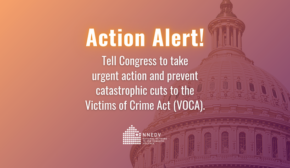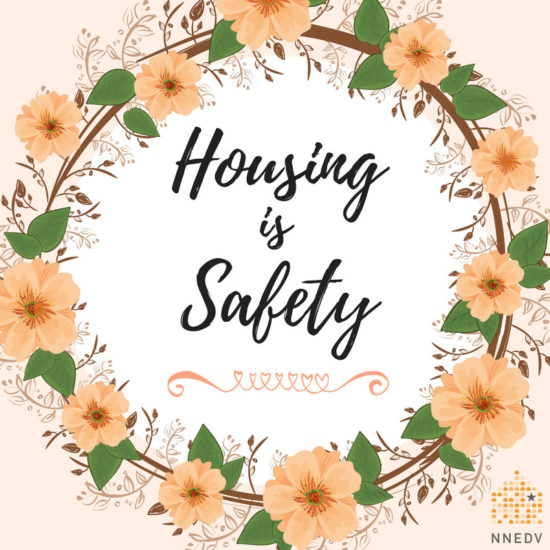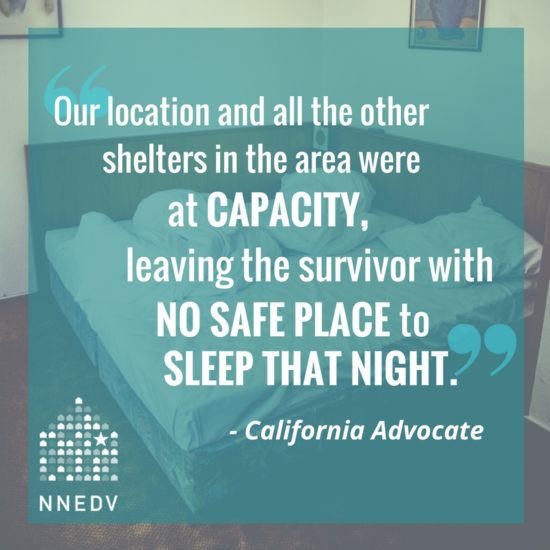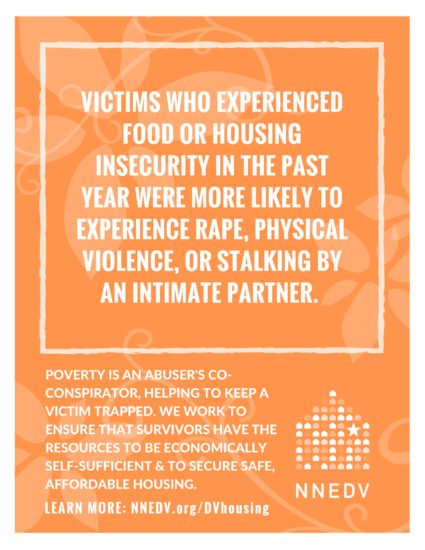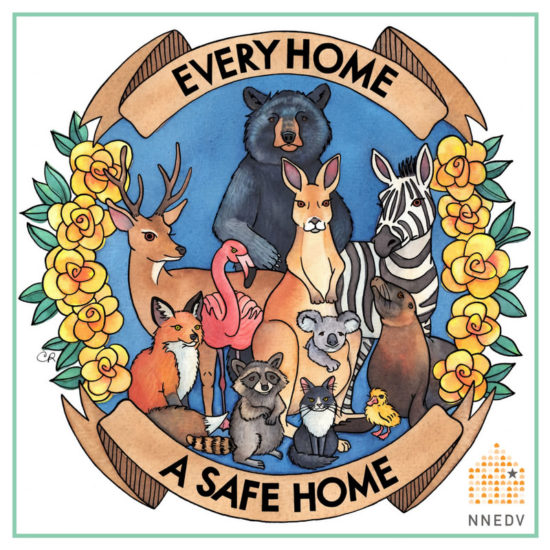16 Things You May Not Know about Housing for Survivors
November 24, 2017
Survivors of domestic violence deserve safety, and securing safe housing is often an essential step on their journey. The National Network to End Domestic Violence (NNEDV) is dedicated to addressing the housing issues that survivors face and working to enhance the housing options available to survivors. In 2017, we shared “16 Things You May Not Know About Housing for Survivors” to bring this work to light. Read on and learn more:
1. Housing is safety.
Survivors of domestic violence often must flee their homes to escape life-threatening violence from an abuser. Securing safe, affordable housing is a crucial step on the pathway to a survivor’s long-term security and often means the difference between being able to leave, and having no choice but to stay.
2. Domestic violence is a leading cause of homelessness for women and children.
Studies show that between 22 and 57 percent of homelessness among women is caused by domestic violence. More than 90 percent of homeless women experience severe physical or sexual violence at some point in their lives, and 63 percent have been victims of intimate partner violence.
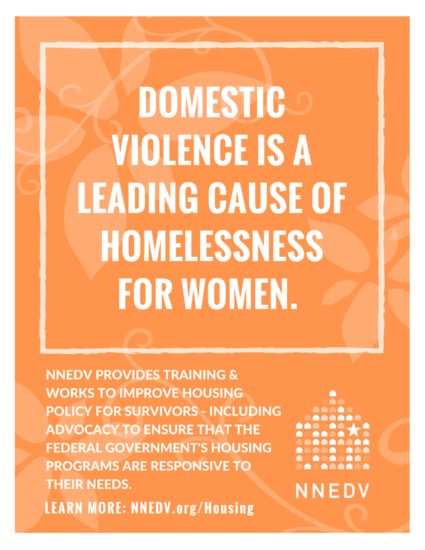
3. Every day, thousands of adults and children fleeing domestic violence find refuge in an emergency shelter or transitional housing program.
NNEDV’s annual Domestic Violence Counts Report finds that emergency shelters are often the first step for survivors fleeing abuse, which means that shelters and local programs must have the resources they need to keep space available for victims in need. When shelters are full, survivors are often faced with an impossible decision between returning to an abuser or risking homelessness.
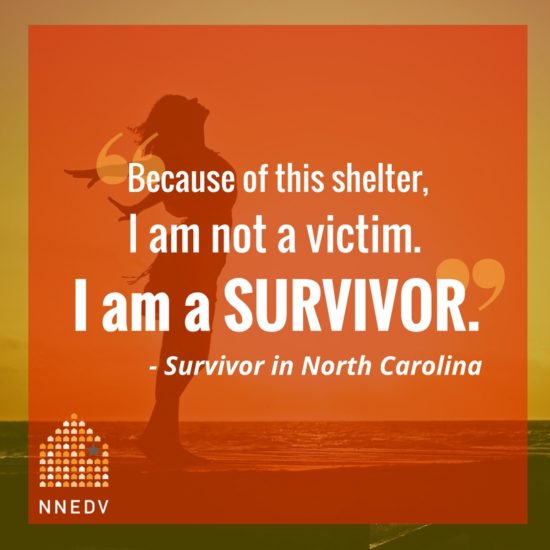
4. Many victims receiving housing services at local domestic violence programs are children.
As NNEDV’s annual DV Counts Report shows, advocates work with victims at local programs to secure safe housing, and it means the world to survivors and their children. Leaving an abusive partner can be a difficult, even dangerous decision, and victims deserve to know that help will be available for themselves and their families when they need it most.
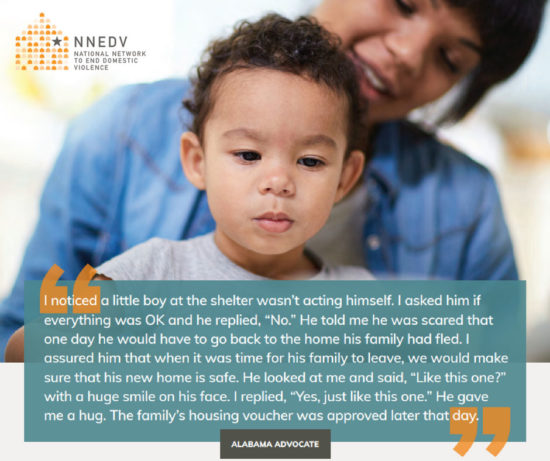
5. Emergency shelters are a lifeline for many survivors.
A multi-state study funded by the National Institute of Justice (NIJ) indicated that, if emergency domestic violence shelters did not exist, the consequences for victims would be dire, including: homelessness, losing custody of children, continued abuse, or death. Many abusive partners choose to escalate violence in order to gain more power and control in a relationship, and victims deserve to leave safely long before this happens.
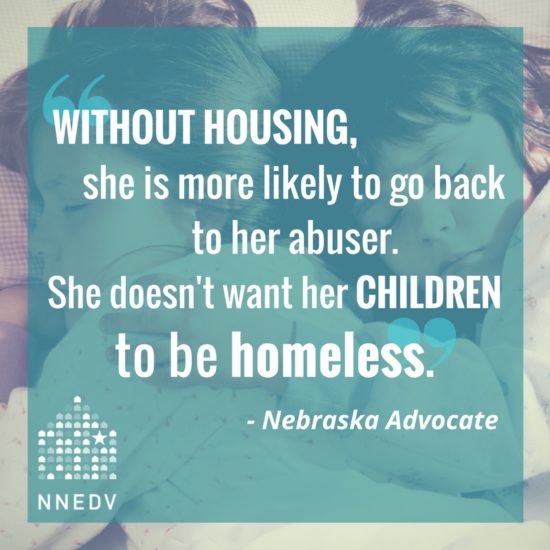
6. The majority of domestic violence programs provide housing advocacy to survivors throughout the year.
Survivors of domestic violence have unique safety, confidentiality, and trauma-related needs that must be addressed through survivor-centered housing. As reported in NNEDV’s DV Counts survey, the services offered by domestic violence-specific housing programs vary and may include short- and long-term housing, rental assistance services, and support services that work to meet survivors’ individual needs.
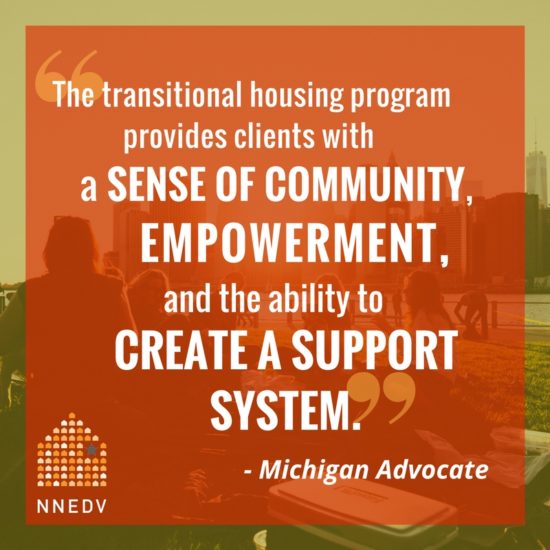
7. Housing remains a critical unmet need for survivors.
Eighty-four percent of survivors in domestic violence shelters reported that they needed help finding affordable housing. At local programs, NNEDV’s DV Counts Report finds that the majority of survivors’ unmet needs are often related to housing and shelter. In another nationwide study, more than half of the victims who identified a need for housing services did not receive them.
8. Local domestic violence programs provide more than just emergency shelter.
Ninety percent of victims of domestic violence reported knowing more ways to plan for safety after receiving services from a local domestic violence program. Planning for safety is an important step to ensuring long-term security and often helps survivors feel prepared to finally leave an abusive partner for good.
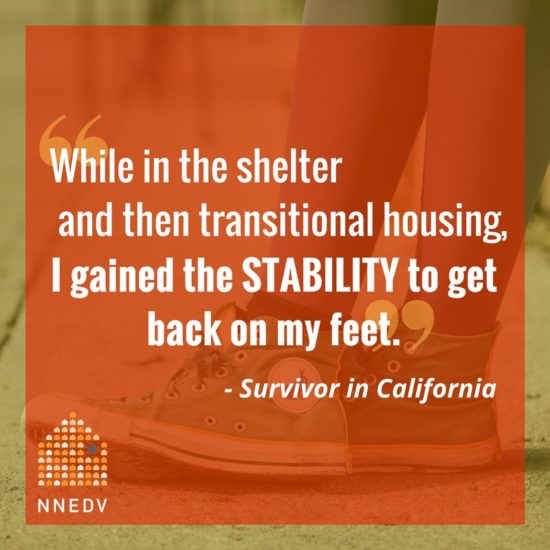
9. Transitional housing provides supportive housing to survivors for six to 24 months.
Transitional housing programs help survivors and their families rebuild their lives after fleeing abuse. Without these safe, affordable programs, survivors may be forced to return to their abuser or face homelessness. NNEDV’s Transitional Housing team trains the nation’s transitional housing providers to ensure that their services are survivor-centered, trauma-informed, and effective.
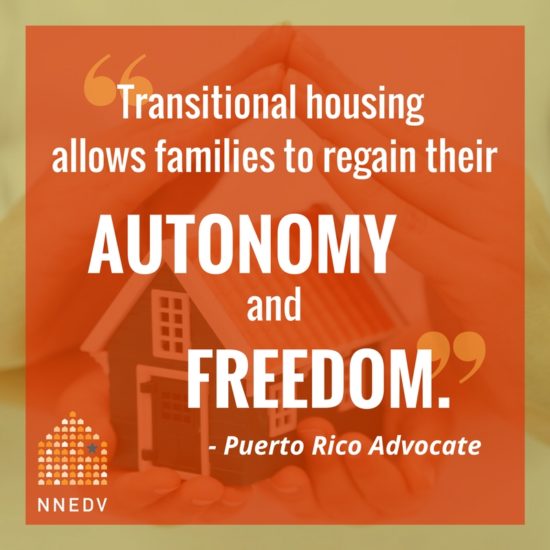
10. Congress can respond more effectively to the housing needs of survivors.
NNEDV works with Congress to create legislation and new funding streams to improve the federal response to homeless survivors. Learn more about our work at this intersection.
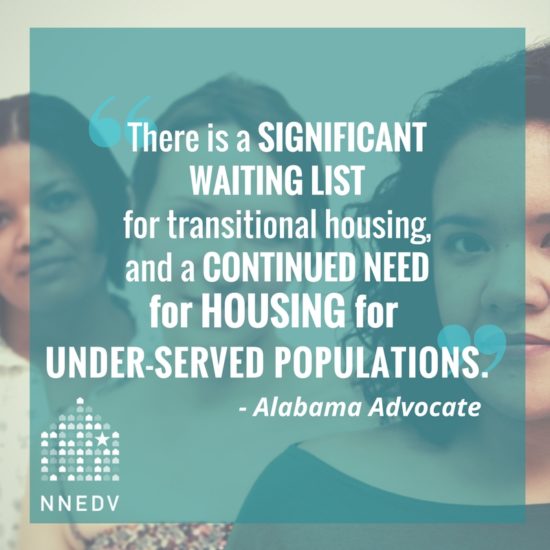
11. Housing insecurity can exacerbate survivors’ vulnerability.
Women and men who experienced food or housing insecurity in a 12-month period had a significantly higher prevalence of rape, physical violence, or stalking by an intimate partner in that same time period, as compared to those who did not experience food or housing insecurity.
12. Financial abuse impacts survivors’ access to affordable housing.
Domestic abusers commonly sabotage a victim’s economic stability, making victims more vulnerable to homelessness. Many survivors of domestic violence have trouble finding rental properties because they may have damaged credit, rental, and employment histories as a result of the abuse. NNEDV’s Economic Justice team works to empower survivors to overcome financial abuse and secure housing and economic stability.
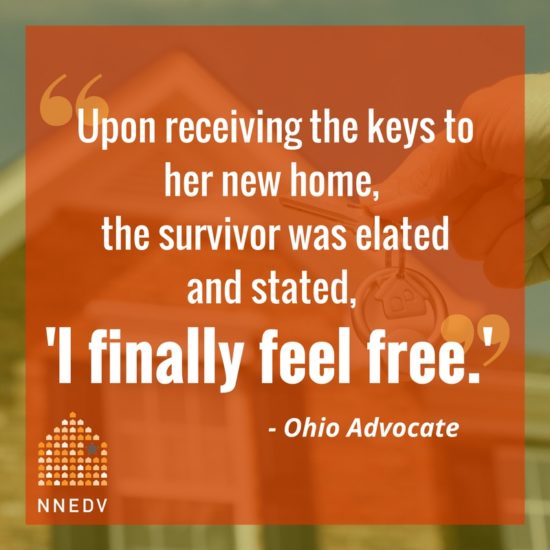
13. Survivors often face discrimination that results in eviction or denial of housing based on the violent actions of the perpetrator.
In 2005, NNEDV and partners worked with Congress to create landmark protections for survivors in federally-subsidized housing in the Violence Against Women Act (VAWA). We worked to strengthen these protections and create additional options for victims who need to escape violence in VAWA 2013.
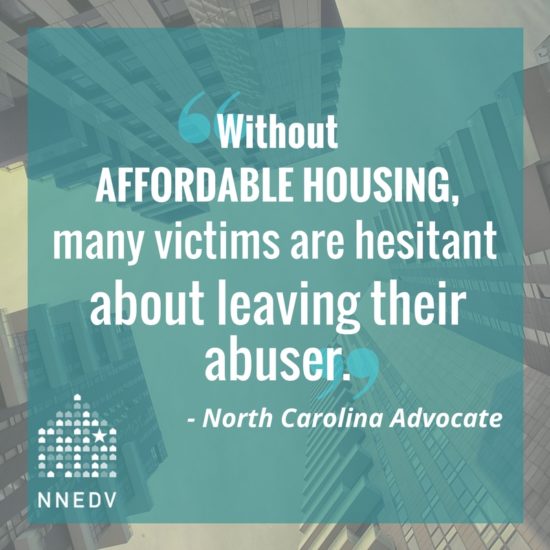
14. Survivors’ housing needs are compounded by a nationwide lack of affordable, safe housing.
Only a small percentage of eligible individuals receive public housing, and the number of low-income households who receive housing assistance from the U.S. Department of Housing and Urban Development (HUD) programs is often far fewer than those who need it.
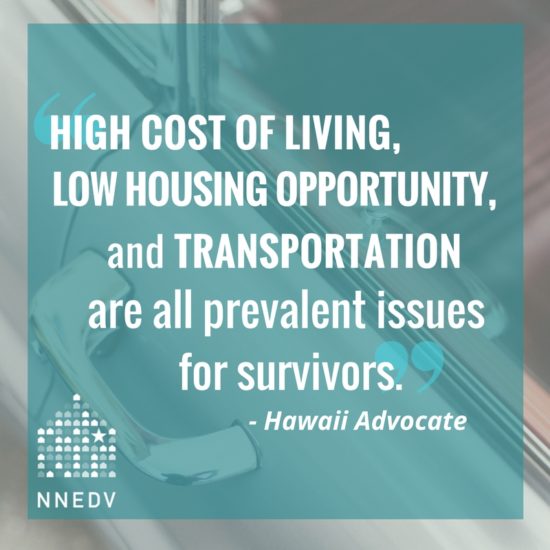
15. NNEDV’s member state and territory domestic violence coalitions work on state and territory laws and local policies to ensure that survivors of domestic violence can access safe housing.
From requirements for landlords to change the locks and complete repairs to early lease termination to prohibiting discrimination, state and territory housing laws and policies can help survivors secure and maintain safe, affordable housing.
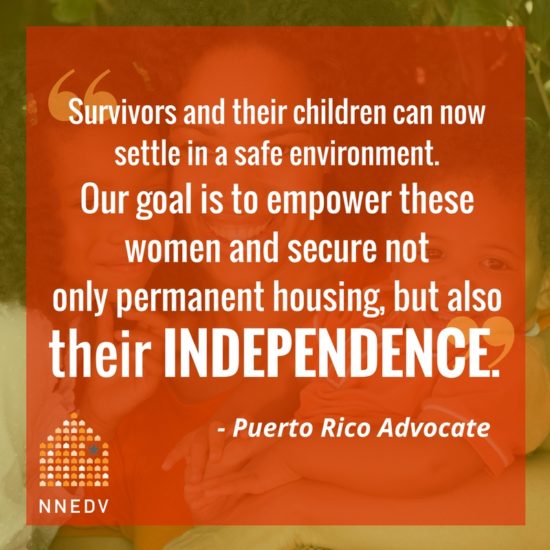
16. NNEDV is a national leader working to increase safe, affordable housing for survivors.
Across intersecting teams and via a multi-pronged approach, NNEDV works to eliminate barriers to housing for survivors through targeted federal policy advocacy and systems advocacy. We partner with national organizations on the Domestic Violence and Housing Technical Assistance Consortium, which works to build the capacity of coalitions and local programs to improve policies to address the needs of survivors. We train local communities and nonprofit housing providers on best practices to connect survivors to safe, confidential, and affordable housing. We leverage our voice to join our partners in the fight for more affordable housing. Housing is central to our advocacy because we believe that housing is safety. We are working toward making the statement “every home a safe home” a reality.





